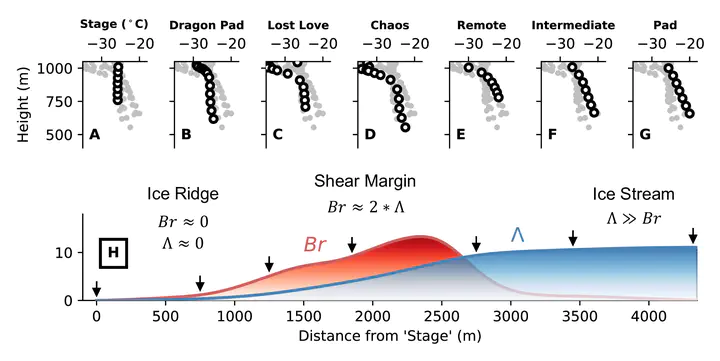Radar attenuation demonstrates advective cooling in the Siple Coast ice streams

Abstract
Ice-stream shear margins are hypothesized to be warmer than slow-flowing ice, being heated by lateral shear strain. Warm ice deforms more easily, establishing a positive feedback loop in an ice stream where fast flow leads to warm ice and then to even faster flow. Here, we use radar attenuation measurements to show that the Siple Coast ice streams are colder than previously thought due to along-flow advection of cold ice from upstream. We interpret the attenuation results within the context of previous ice-temperature measurements from nearby sites where hot-water boreholes were drilled. These in-situ temperatures are notably colder than model predictions, both in the ice streams and in an ice-stream shear margin. We then model ice temperature using a 1.5-dimensional numerical model which includes a parameterization for along-flow advection. Compared to analytical solutions, we find depth-averaged temperatures that are colder by 0.7°C in the Bindschadler Ice Stream, 2.7°C in the Kamb Ice Stream, and 6.2-8.2°C in the Dragon Shear Margin, closer to the borehole measurements at all locations. Modelled cooling corresponds to shear-margin thermal strengthening by 3-3.5 times compared to the warm-ice case, which must be compensated by some other weakening mechanism such as material damage or ice-crystal fabric anisotropy.